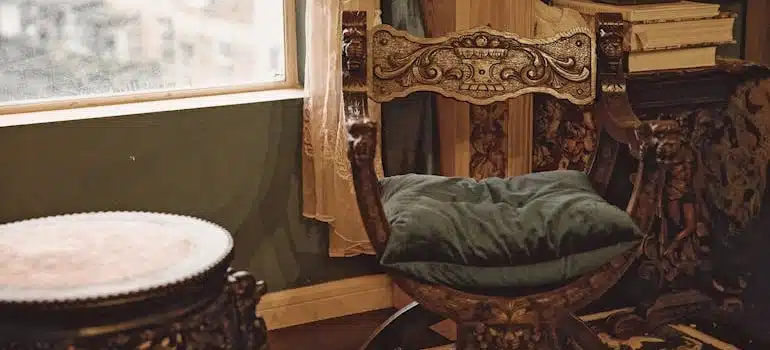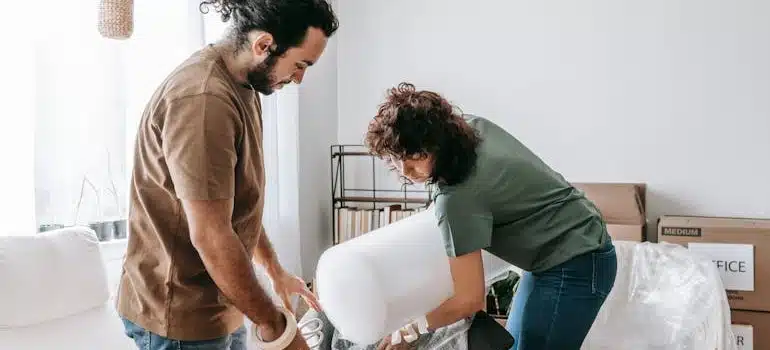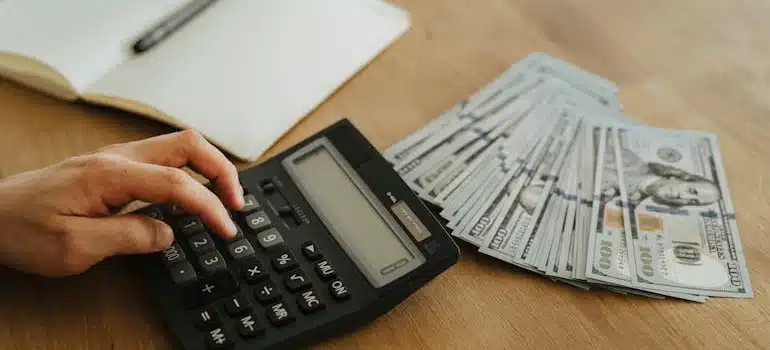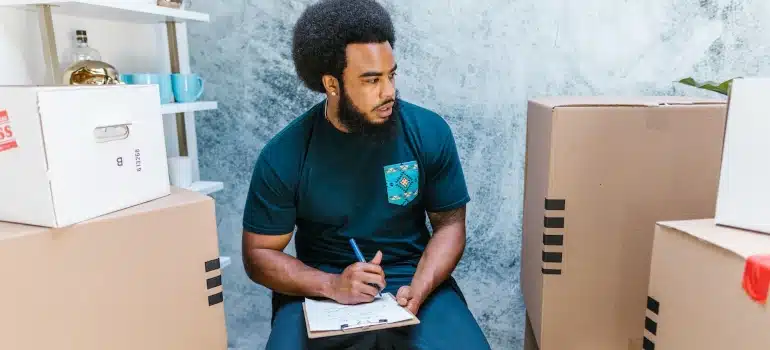Common issues when moving antique furniture internationally
Preparing for an international move with prized antiques? Understandably, it can feel overwhelming. However, you’re not alone. Many face common issues when moving antique furniture internationally. Armed with the right knowledge, you can protect your valuables against potential pitfalls. From understanding transit damages to navigating customs, there’s much to consider. Moreover, with a partner like moving companies in Florida, you have experts by your side. Dive deeper with us as Pro Movers Miami guides you through each challenge, ensuring your precious pieces reach their destination intact. Keep reading and find out what you can do before the move.
Common issues when moving antique furniture internationally happen during the transit
Antiques aren’t just items; they’re pieces of history. However, their age often means fragility. During a move, these treasured pieces are vulnerable. Scratches and dents can mar their beauty, and worse, there’s the risk of severe damage during various stages. One major concern is improper packing. If furniture isn’t adequately cushioned or protected, it can shift inside the moving container, leading to breakage or deformation. Even minor impacts can cause structural damage, especially to delicate wood or fragile glass elements. So, think carefully about the logistics of moving valuable art and antiques to another state.

Loading and unloading issues when moving antique furniture internationally
Handling during loading and unloading can also lead to issues. Antique furniture requires careful maneuvering to avoid scratches or worse, breakage. Additionally, transporting large or heavy pieces presents challenges, as they may need to be dismantled for easier handling. If disassembly isn’t done properly, parts might be lost or damaged, compromising the integrity of the piece. So, don’t do the loading by yourself. Hire professional movers to handle the loading and unloading logistics.
Stepping up protection
It’s not just about moving; it’s about preserving. Opting for professional packers, especially those specializing in antiques, is a game-changer. They have the expertise to handle and pack these items, ensuring their safety. Furthermore, the right materials and techniques make a world of difference. But accidents can happen. That’s where insurance comes into play. It’s more than paperwork; it’s peace of mind. Insurance isn’t an afterthought when you’re moving precious cargo; it’s a priority. For the entire process, from packing to custom clearance and freight forwarding, trust the experts. In other words, treat your antiques with the care they deserve, and they’ll shine in their new home.
How to Protect different types of antique furniture
It is indeed possible to move antiques without any damage. Alongside choosing the right packing materials and climate-controlled environment, you can also do this:
- Disassemble when possible: If your antique furniture can be safely disassembled, break it down into smaller pieces to reduce the risk of damage. This also makes it easier to pack and secure.
- Insure the shipment: Given the value of antique furniture, it’s crucial to insure the shipment for its full value. This will provide compensation if anything goes wrong during the journey.
- Take detailed photos: Before shipping, take clear, high-quality photos of your antique furniture from various angles. This will serve as documentation of its condition before shipping and will be useful if you need to make an insurance claim for damage during transit.

Tackling climate and environmental hurdles
Antiques have tales to tell, but they’re also like sensitive souls, reacting to the world around them. However, temperature swings or moisture can threaten their integrity, leading to warping or even cracks. It’s not just about moving; it’s about understanding and caring for their nuances. Overall, temperature fluctuations and humidity changes during international transit also pose a significant threat. Wood furniture, for example, can expand or contract due to changes in moisture levels, which might cause warping or cracking. Likewise, temperature extremes can cause finishes to deteriorate or paint to peel off. So, consult with your antique movers about climate-controlled protection during transit.
Creating a safe environment
Choosing climate-controlled shipping is more than just a luxury; it’s a necessity for these fragile pieces. With this option, they get the consistent environment they need. Moreover, while it’s crucial to protect them during transit, understanding the climates of both your starting point and destination is equally important.
This knowledge prepares you for potential risks. And, in your quest for a smooth move, turning to customs clearing agents in Bahrain services can offer invaluable expertise in ensuring your antiques face no environmental hitches. After all, it’s about ensuring their stories continue to be told in their best state.
Dealing with the cost of the move
Moving cherished antiques isn’t just about protecting memories; it’s also a financial venture. With special packing, insurance, and customs duties, the bills can quickly stack up. However, fret not; there’s a pathway to manage these costs without compromising on safety. Make a proper budget plan that includes unexpected expenses and consider all factors that may affect your moving cost, such as complexity, distance, and the number of items.

Budgeting with precision
While the costs might seem overwhelming, clarity can be your best ally. Start by obtaining quotes from trusted international movers who have a knack for antiques. Having a clear picture allows you to plan your budget meticulously. In addition, always make room for those unexpected hiccups because they could happen during the move. While on this journey, some insightful tips for managing your budget” can be handy. By being proactive and well-informed, not only can you safeguard your treasured possessions but also ensure that your bank balance remains healthy. After all, smart moves are about both care and cost.
Navigating customs and documentation
Each country sings its own tune when it comes to customs regulations. Antiques, with their value and history, face specific challenges. Imagine the disappointment when a cherished item gets delayed, fined, or worse, confiscated due to paperwork missteps. Every destination has its rules, and knowing them is half the battle. Therefore, diving deep into research for your specific destination keeps those precious antiques safe. However, the sea of regulations can sometimes be overwhelming. In other words, why not call in the experts?
Engaging a customs broker or a specialist familiar with antique moving can be your best move. They’ve been down this road, understand the turns, and help streamline the process. With them on your side, not only are the antiques safeguarded, but your peace of mind is, too. After all, ensuring your treasured possessions arrive without a hitch is the goal.
Legal work and proper documentation
When moving antique furniture internationally, understanding and complying with legal regulations and ensuring proper documentation are crucial to prevent potential issues during transit. Each country has its own set of rules, and navigating them can be complex, especially when dealing with items of cultural significance or materials that may be restricted. To ensure a smooth process, consider the following steps:
- Research destination regulations: Thoroughly investigate the legal restrictions of your destination country regarding the import of antiques.
- Ensure cultural sensitivity: Be aware of cultural values and restrictions that may affect the transport of certain items. Some antiques may be considered national treasures or have cultural significance, making their export or import subject to strict regulations.

Regarding documentation, it’s essential to prepare and present the necessary paperwork to facilitate the smooth transit of your antiques. Common documents required include:
- Commercial invoice: Details the transaction, including the value and description of each item.
- Packing list: Provides information on how items are packed, aiding in inspection and inventory.
- Bill of lading: Serves as a receipt for the goods and outlines the terms of the shipping agreement.
- Export declaration: A document required by governments to control exports and ensure compliance with regulations
Insurance issues when moving antique furniture internationally
When moving antique furniture internationally, insurance is a crucial consideration, as the standard coverage provided by moving companies is often insufficient to fully protect valuable items. Here’s what you need to know about insurance issues when shipping antiques:
- Limited coverage from moving companies: Most moving companies offer basic or standard moving insurance, which typically covers a fraction of the value of your antique furniture. This type of coverage often only protects against damage or loss during transit, and the payout is generally limited, sometimes based on weight rather than actual value.
- Need for specialized insurance: Given the high value and fragility of antique furniture, it’s important to secure additional, specialized insurance that specifically covers antiques, fine art, or collectibles. This coverage will provide protection based on the actual market value of your pieces, ensuring you’re adequately compensated if something goes wrong.
- Appraisal and documentation: Before purchasing specialized insurance, consider having your antiques professionally appraised. This will help determine their true value and provide documentation for the insurer. An accurate appraisal ensures that you are adequately covered for the full value of the items should damage or loss occur.
- Damage during transit: Even with professional movers, accidents can happen. Standard moving insurance may only cover a small portion of repair or replacement costs. Specialized insurance, on the other hand, typically covers repairs, loss of value, and replacement, offering more peace of mind during an international move.
- Additional costs: Be aware that specialized antique insurance can be more expensive than standard moving insurance, but it’s a worthwhile investment for the protection of your valuable items.

Consider your piano as a part of your furniture? These are the common issues when moving your antique piano internationally
Yes, a piano can certainly be considered a part of your furniture, but it requires special consideration when moving internationally, especially if it’s an antique. Antique pianos are valuable, heavy, and delicate, making their international move more complex than typical furniture. Here are some common issues to be aware of when moving your antique piano internationally:
- Weight, size, and fragility.
- Pianos are sensitive to temperature and humidity, so climate-controlled shipping is crucial.
- Standard insurance often doesn’t cover full value, so get specialized coverage.
- Disassembly and reassembly require expert handling to avoid damage.
- Be aware of import/export regulations for materials like ivory or exotic wood.
- Expect high costs due to shipping, climate control, and insurance. Proper planning ensures safe transport and protects its value.
To avoid these issues, the services of piano movers Miami companies offer are game-changers.
Common storage issues when moving antique furniture internationally
Storing antique furniture internationally comes with unique challenges. Variations in temperature and humidity can warp or crack wood, causing irreversible damage. Without proper padding, fragile surfaces may scratch, dent, or lose their finish. Insecure storage exposes your valuable pieces to theft or accidental damage. Limited space in storage units often means stacking, which can destabilize delicate items. Some antiques need more than just space—they require a climate-controlled storage environment to maintain their integrity. Smart storage solutions involve custom crating, regular inspections, and secure, climate-controlled units that keep antiques safe, stable, and in perfect condition while in transit or storage.
Hire white glove movers when moving antique furniture pieces internationally
When moving antique furniture internationally, white glove movers tackle common challenges head-on. They pack fragile pieces with custom crating and padding to protect against scratches and dents. For temperature-sensitive items, they use climate-controlled environments to prevent warping or cracking. Skilled in disassembling and reassembling furniture, they ensure safe transit without any loss or misalignment. They also handle complex import/export regulations, making sure all paperwork is in order. With specialized insurance, white glove movers provide full protection, ensuring a smooth, secure, and stress-free move.

Finalizing the moving preparation
Moving antiques across borders isn’t just about packing boxes. It’s a dance with regulations, sensitivities, and unpredictable challenges. However, with the right strategies, most hurdles turn manageable. Research, collaboration, and a dash of cultural understanding are your trusty allies. Antiques possess generations of memories. Therefore, when our interstate movers in Florida transport them internationally, it’s not just about logistics. It’s about honoring their past while ensuring a safe future. In other words, with knowledge and careful planning, you can become a pivotal chapter in their storied journey. Your dedication ensures they stand the test of time, wherever they are.
Avoid the pitfalls tied to common issues when moving antique furniture internationally. Remember, every artifact has a story, and by moving it thoughtfully, you’re ensuring its tale continues, undamaged, in a new locale. Embrace the journey, and let each step be as cherished as the antiques you hold.
